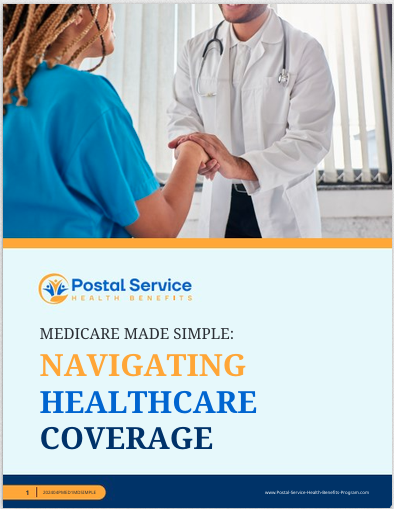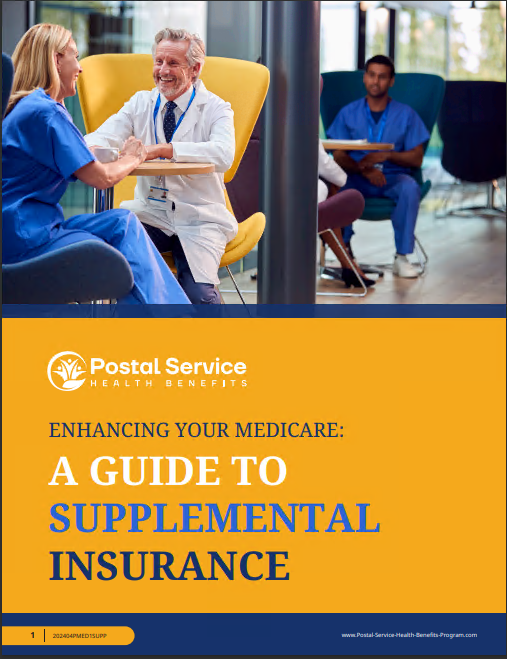Key Takeaways
-
Two PSHB plans that sound nearly identical in name and coverage often have significant hidden differences in costs, networks, and Medicare integration benefits.
-
Looking beyond summaries and diving into plan details is the only way to make an informed decision—especially if you’re approaching age 65 or already retired.
The PSHB Plan Comparison Trap
When you first review your Postal Service Health Benefits (PSHB) plan options, it’s easy to believe that plans with similar titles and descriptions must offer the same value. After all, many plans mention the same types of benefits: preventive care, specialist visits, prescriptions, and wellness services. But in 2025, what sounds alike on the surface can lead to vastly different experiences once you start using your coverage.
The key problem is that summaries often flatten out critical distinctions. You may see the same deductible amount, the same out-of-pocket maximum, or the same Medicare Part B coordination statement—but the underlying structure of how those benefits actually work can vary sharply between plans.
Costs That Don’t Appear in a Summary
A plan might advertise the same in-network deductible, but what about the copay structure for your common services? Or how prescriptions are tiered? Consider:
-
Primary and specialty care copays can range from $20 to $60.
-
Urgent care and emergency visits often have different cost tiers across plans.
-
Coinsurance for outpatient surgeries may range from 10% to 30%.
-
Prescription tiers may include or exclude common generics in Tier 1 depending on the formulary.
Even if the premium is similar, the plan’s cost-sharing structure can lead to hundreds—or thousands—more in expenses over the course of a year.
The Medicare Coordination Variable
In 2025, Medicare-eligible annuitants are required to enroll in Medicare Part B to keep PSHB coverage unless exempt. However, not all plans coordinate with Medicare the same way.
Some plans offer enhanced benefits when you combine them with Part B, including:
-
Waived or reduced deductibles
-
Lower copays or no coinsurance for major services
-
Prescription coverage through Medicare Part D Employer Group Waiver Plans (EGWPs)
Others may not reduce your cost burden much even if you’re paying for Part B. The summary may simply say “coordinated with Medicare,” but the real test is whether the plan offsets your Part B costs or doubles them.
Networks That Seem Broad—Until You Need Them
Another hidden variable is the provider network. On paper, most PSHB plans claim broad national networks. But the real scope of available providers depends on:
-
Whether your preferred doctors accept the plan.
-
If the network treats Medicare as primary or secondary.
-
Access to specialists without referrals.
-
Local hospital partnerships and exclusions.
The difference can mean traveling out of your area for in-network specialty care, or being forced to pay out-of-network rates for a routine test if the nearest facility doesn’t contract with your plan.
Pharmacy Access and Tier Realities
In 2025, all PSHB plans for Medicare-eligible members include prescription drug coverage through a Medicare Part D EGWP. But not all formularies are structured the same way.
What you don’t see in a summary:
-
Whether your pharmacy is preferred or standard retail.
-
How insulin, inhalers, or high-cost generics are categorized.
-
Whether step therapy or prior authorization is required.
-
Annual limits, exclusions, and specialty drug tiers.
The $2,000 out-of-pocket cap on Part D drug costs offers strong protection, but only after you’ve spent time navigating through potential coverage restrictions, which vary by plan.
Out-of-Pocket Maximums Are Just the Beginning
Every PSHB plan lists a maximum out-of-pocket (MOOP) limit for in-network services. But few mention how often you’ll hit it—or how you might hit it faster with one plan over another.
Factors that influence your real out-of-pocket burden:
-
Whether the deductible applies to the MOOP.
-
If out-of-network costs are capped or unlimited.
-
Whether coinsurance applies after the deductible is met.
-
If preventive and chronic condition visits count toward the MOOP.
A plan with a $7,500 MOOP might end up costing you more than one with a $10,000 cap if it includes a higher coinsurance rate or fewer covered services.
Medicare Part B Reimbursement Isn’t Always Equal
Many annuitants ask: will my PSHB plan help offset the cost of Medicare Part B?
In 2025, some PSHB plans offer partial reimbursement for your Part B premium—sometimes up to a few hundred dollars annually. However, others offer none at all. This is rarely highlighted in plan summaries but can make a substantial difference in your monthly retirement budget.
Make sure to:
-
Check for any “Medicare Reimbursement Benefit” in the full plan brochure.
-
Confirm whether the reimbursement applies to all eligible family members.
-
Understand if you must opt into specific plan features to receive it.
Wellness and Extra Benefits Are Not Equally Useful
Some PSHB plans now include wellness programs, telehealth, and extra perks like gym memberships, hearing aid allowances, or nurse hotlines. While these can be valuable, they’re not always administered the same way.
Consider:
-
How easy it is to access telehealth providers in your state.
-
Whether wellness dollars require submission of receipts or pre-approval.
-
If benefits are per enrollee or per household.
These differences won’t appear in summary comparisons but may affect how much of the benefit you’re realistically able to use.
Plan Portability and Life Events
Some PSHB plans are better equipped to handle major life changes—like a move to a different state, adding a dependent, or changes in Medicare status.
Key factors to review:
-
National plan coverage versus regional limitations
-
Enrollment restrictions for family members
-
Special rules for coordination when turning 65 mid-year
When you need to make a quick change due to a life event, a flexible plan can prevent coverage gaps or delays in access to care.
Open Season Assumptions Can Be Costly
During the PSHB Open Season each November through December, many enrollees renew the same plan by default. But the assumption that your plan hasn’t changed—just because the name and premiums look the same—can lead to costly surprises in the new year.
Always:
-
Review the new year’s brochure for changes in drug coverage, copays, and coordination rules
-
Compare side-by-side with at least one other plan
-
Factor in expected medical needs for the coming year
PSHB plans often change tiers, provider relationships, and benefits structure annually. A passive renewal without research is a risk, especially if you’ve reached Medicare eligibility.
Where the Fine Print Matters Most
The PSHB plan brochure (not the summary) is your best source for these hidden differences. It’s where you’ll find the fine print that reveals:
-
What’s truly covered and what’s not
-
Definitions of key terms like “hospital services” or “rehabilitative care”
-
Clarifications on whether services are counted toward the deductible or MOOP
-
Preauthorization requirements and appeal rights
Brochures are dense, but skipping them can cost you far more than time.
What This Means for Your 2025 Plan Choice
In 2025, the PSHB landscape is defined by nuance, not generalities. Two plans that seem alike on a comparison chart may be miles apart in how they support your health and your budget.
You owe it to yourself—and your family—to:
-
Read beyond the summaries
-
Ask detailed questions
-
Make your decision based on actual use, not just projected costs
Get in touch with a licensed agent listed on this website if you want expert guidance in breaking down the fine print and comparing your real options side by side.







